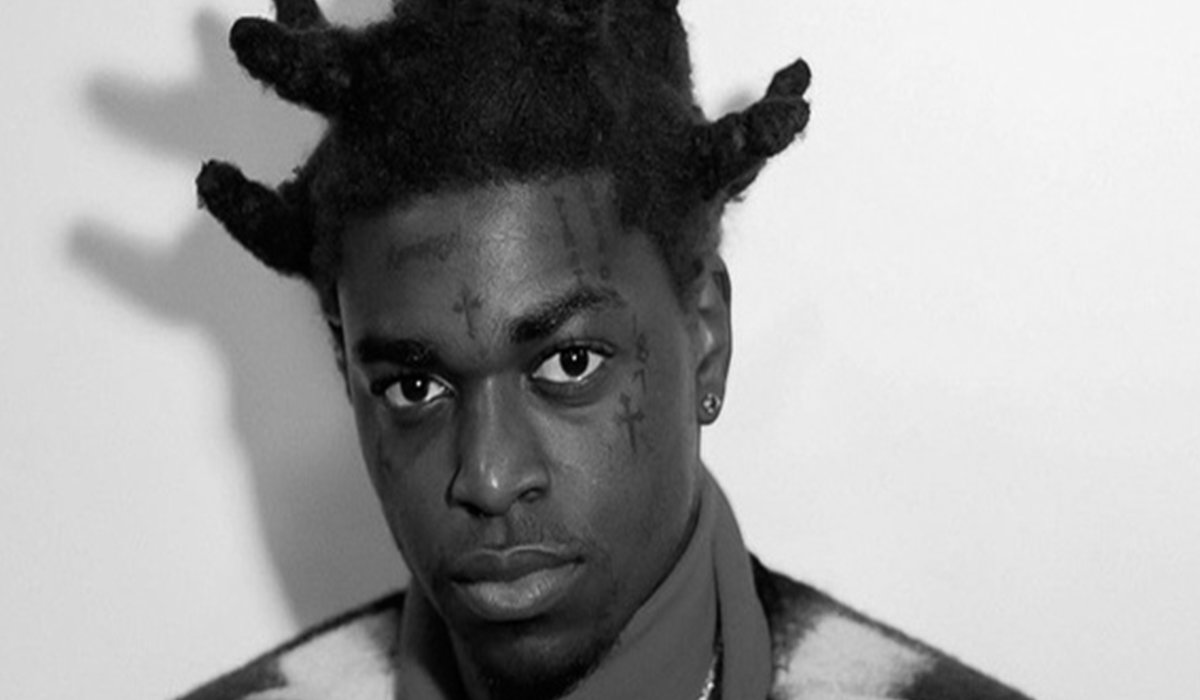Why Kodak Black Is A Voice For The Ghetto
Kodak Black is a walking stereotype; a black street thug from the projects with knotted twists and an “ignant” demeanor, who shouts “Glee!” and “Sniper gang!” when he pleases. His voice is pinched and his accent is thick, with a country slur, similar to Boosie BadAzz. There’s something bluesy about the way he carries his voice over a melody, you’ll be singing slave song, “Wade In The Water.” His bluesy edge gives off a melancholy feel, in “Versatile” of Project Baby 2. She made me happy, she made me smile. She brought me up, when you let me down.
In a recent interview with Famous Dex, he says newwave rappers should respect the MC legends. Dex concurs that new school rap is solely for entertainment and hype, while Ice Cube, NAS, and Jay-Z make “real music.” However, even “mumble-rappers” themselves are belittling their own artistry, allowing others to reject their truth and reality. While Famous Dex agrees that newwave rappers are here to entertain, rappers like 21 Savage actually do speak about their brutal hardships of being shot in the head, selling dope, or watching their friends die. “They don’t understand my slang or my accent. They don’t know how to categorize it, ’cause it’s art. They’re just trying to bring it down,” says 21. Ironically, we respect the wiser rappers who once lived the struggle, like Jay-Z, 50 Cent, or NAS, but don’t respect young rappers who are currently living it or barely coming out it. Jay-Z says to last forever, artists must identify with the truth. We have hip-hop artists like Kodak who are pouring their soul, but they still sit at the bottom in hip-hop royalty. However, “mumble rappers” like Kodak are so much deeper than what they present on the surface; perhaps he’s just finessing.
Kodak challenges the stigma toward black hypermasculinity addressing mental health, self-reliance, redemption, and even romance. Similar to Lil Uzi, XXXTENTACION, and Future, Kodak grants black artists the luxury of complex and multifaceted experiences. In a society that clowns Tyrese for having a mental breakdown, we are telling black men they are weak if they shed a tear. Kodak tells black boys and men it’s okay to be vulnerable. We are allowed to feel more than just anger and rage. DJ Hustle
This concept reminds me of an article by Alexander Goodwin, “We Need to Talk: Black Men, Depression And Hyper-Masculinity.” Goodwin asserts that African American men suppress their feelings in order not to ostracize themselves from their community.” “Hip-Hop: Beyond Beats and Rhymes,” director, Byron Hurt, asserts, “Men need to take a look at themselves…we’re all in this box, in order to be in this box you have to be tough, strong, have money, be a pimp, have women, and dominate other men.”
Lil B.I.G. Pac is one of Kodak’s most heartfelt albums, you’ll almost want to pray for the kid or hell, even give him a hug or two. Similar to Tupac, Kodak expresses his fear of a foreshortened future in “Can I.” Will I live long enough to raise my son. In “Purp,” Kodak tells us he is blessed….but feels cursed, and in “Skrt,” he expresses his anger toward his teachers, Fuck my school and fuck my teacher too. Kodak’s lyrics remind me me of Tupac’s “So Many Tears.”And fuck the world cause I’m cursed, I’m havin’ visions of leavin” here in a hearse, God can you feel me? Biggie Smalls also rapped about redemption and misery. I’m ready to die and nobody can save me. Fuck the world, fuck my moms and my girl. My life is played out like a cheri curl, I’m ready to die! Are these black artists angry for no reason, or is this “fuck you” attitude disguised as a cry for help in a society that tells them not to feel?
In “Gave It All” Black expresses his commitment to the streets while still being in school, from hiding rocks in his sock to being locked behind bars. From a young age, Black learned the importance of independence when he realized the friends are not really down for him when he was needed. This song is nostalgic and hypnotizing with a lazy, melancholy horn over the beat. This song shadows his mood at the time; perhaps, it was loneliness.
In “Change My Ways,”Kodak admits his willingness to abandon the street life, though being a project baby is all he knows. Harriet Tubman is metaphoric to his life. With a tunnel vision he is a fugitive trying to escape from his past, running from the system, or perhaps running away from those who are trying to bring him down; a money-hungry baby mama, the cops, or perhaps the haters. In “Tunnel Vision,” from album, Painting Pictures, he admits They wanna see you in a penitentiary….They wanna see a nigga shot or see me in the system. Whatever Kodak is running from, he makes a vow to better himself. Like a detox, he wants to clean the poison from his life, regardless of the clout behind him. I’m tryna cover my dirt. I put in so much work. Sniper Gang, this ain’t a business. Sniper Gang, this how I’m living. I need to change how I’m living. I think I’m way too committed. When I ain’t thuggin’ I miss it. My trigger finger be itching
At the end of the day, Kodak is a misunderstood, hopeless romantic who wants to be loved by a lil’ baby who gon’ listen. Painting Pictures is Kodak’s most romantic album. In “Save You,” Kodak turns into Bobbi Brown in the Tenderoni days, you’ll be bending on one knee, pouring your heart to some girl in the rain. “Save You” reminds me of New Edition’s “Cool It Now,” when Ralph’s friends tell him not to date the girl he wants, and he’s like “Ronnie, Bobbi, Ricky, and Mike, if I like the girl, who cares who you like!” Kodak wants to be with someone who may not be right for him, but he’s in love and is willing to risk being hurt and follow his heart (similar to myself, if we’re being honest).Whoever he’s chasing is more valuable than chasing paper, he’s willing to bless and appreciate her. “I Don’t Wanna Breathe” really narrates how many of us feel when we really like someone (me, again). Kodak sees himself with one person, and being without them is basically like being dead; there’s no other option.
These “mumble rappers” are more than just a trend of “Skr, skr,” rainbow dreads, lean, codeine, and molly. From Geto Boys to DJ Quik, to Drake, to Lil Uzi Vert, the stories of hip-hop remain the same or similar, and each voice is valuable. Kodak is the fatherless kid next door, the “bad kid” in class who’s told wouldn’t amount to anything, the kid who’s told not to cry because vulnerability is weakness, the kid who pretends to be strong when his father is absent and his friends are in the grave, and the heartbroken boy who wants a shawty he can ride with. Kodak is a hero who gives ghetto kids a voice, moreso, strength. He flew in here without his cape, and he’s on his way to save you. Whatever you consider to be real music, these “mumble rappers” have a place in hip-hop too, so take a picture, and enjoy the Kodak moment. Glee! HustleTV
By Atlantis Aubry

